Camping is a fantastic way to calm the mind, connect with nature, and have an adventure. But it’s not easy to make it perfect on your first try. We have had years of trial and error camping on every continent (including Antarctica) and have put together our best camping tips to help make the great outdoors more comfortable and fun.
In this guide, we are going to cover camping essentials, meal planning, how to set up your camp, and much more. So get ready to plan your next camping trip with our help.
Table of Contents
The Best Camping Tips
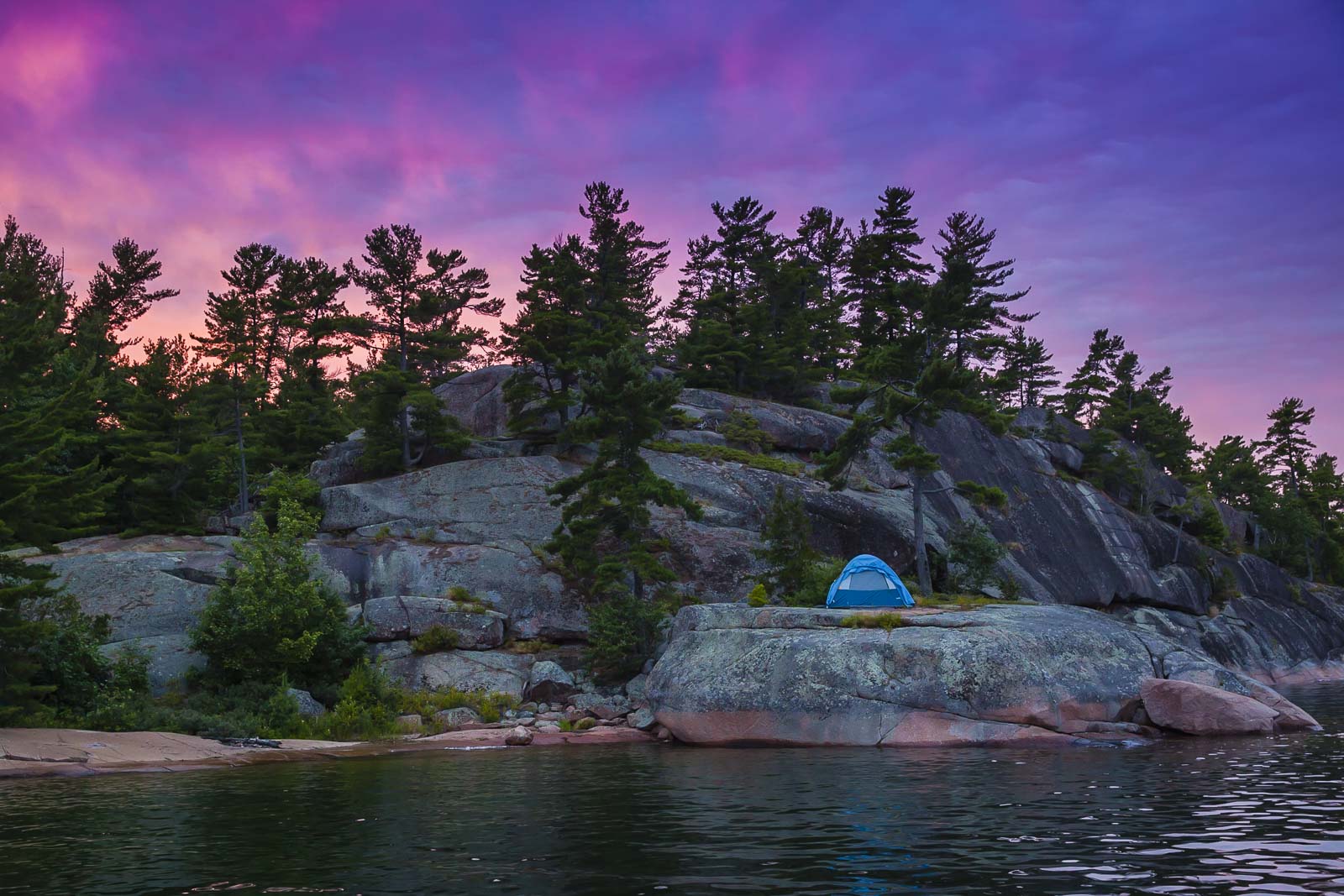
Camping is by far one of the best ways to experience nature and the outdoors but it can be intimidating, especially for beginners. We have done a lot of camping over the years that has allowed us to amass a wealth of knowledge from car camping to backcountry camping. So today, we are going to share all our camping tips and tricks that will make your next camping trip enjoyable.
- If you are new to tent camping, you’ll want to check out our camping gear list to see what you should bring to make the most of your camping trips.
Planning Your Camping Trip
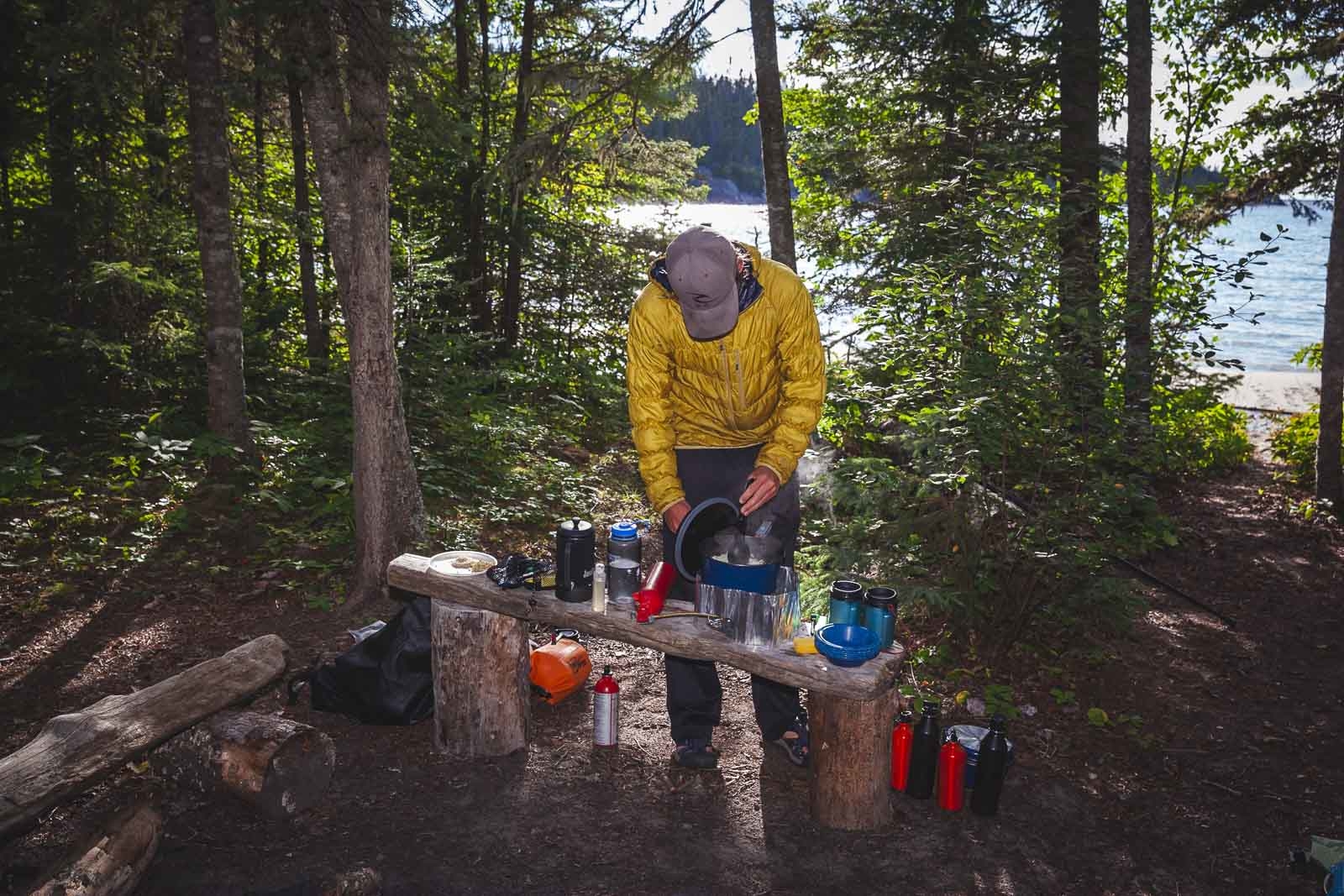
The best camping trips start with good planning. It is not like you can just jump in your car and go. You have to take weather and time of year into consideration. Plus, you will probably have to book a campground well beforehand unless you plan on backcountry camping. Everything you do to plan your trip before hitting the road will make the camping experience easier and less stressful. So let’s get started.
1. What kind of camper are you?
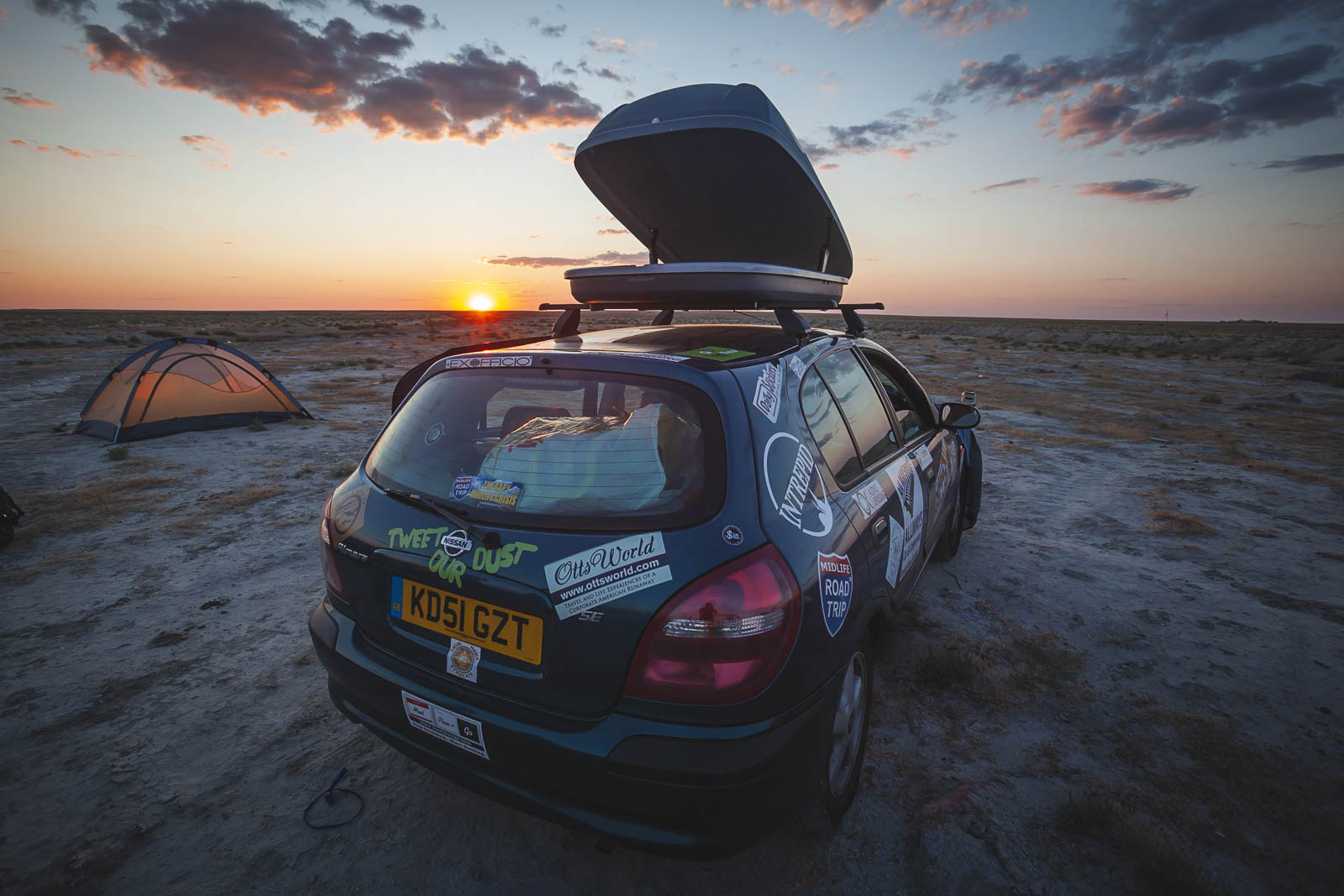
We like to break camping down into different types of styles. Some people prefer roughing it as much as they can and others prefer a bit of comfort on their camping trip. By determining what type of camping experience you want to have, you will be able to plan the perfect trip.
- Tent Camping: By far the most popular as it usually involves camping in a tent at a campsite or a national park where they have facilities like bathrooms and water.
- Car Camping: This is popular in North America as it lets you drive you car into the campsite and the set up is really easy. Sometimes you camp in a tent on the gound, sometimes on top of your car, and the more adventurous just sleep with a blow up mattress in the back of their SUV.
- Trailer or Camper: Campervan travel has become increasingly popular and it involves either towing a camper or actually driving a campervan where all the amenities are inside.
- Backcountry Camping: This for the hardcore campers and hikers out there. This is where you hike in, carry all of your gear, food, and water (or a water purifyer to purify water from lakes) and you are camping with no facilities. This is the type of camping you usually do when you have a bit of experience.
2. Picking a Campground
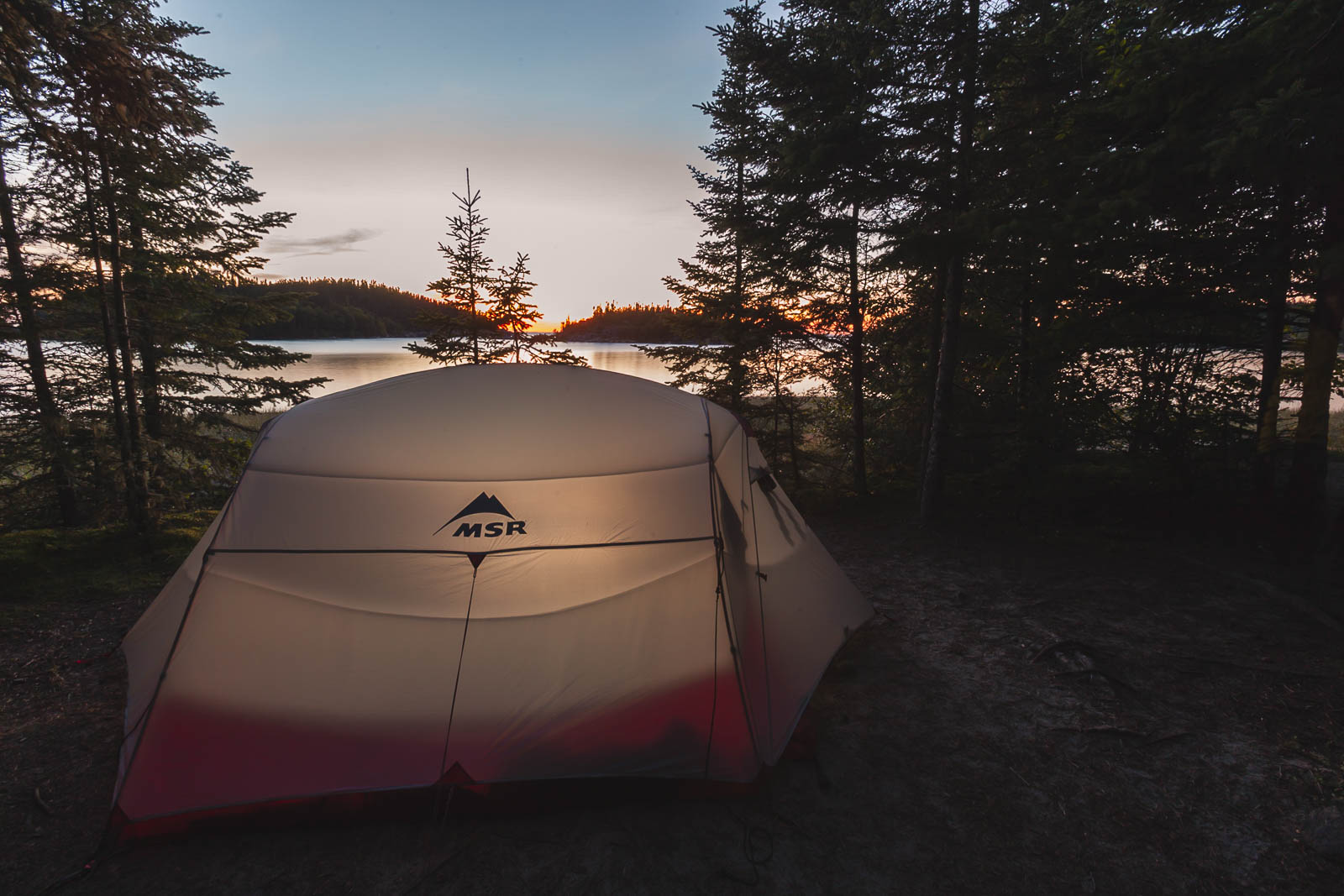
When it comes to choosing a campground it is always recommended to do it in advance. When picking your campground, there are a few things you should consider when choosing one that is right for you:
- What is the best time of year to visit? High season or low season?
- What amenities are available? For example are there washrooms, do they have running water, do they have fire pits or do you need to pack a camp stove, do you need a picnic table?
- What regulations does the campground have? For instance, is there a no fire policy, are there any closures or if you have a dog, are pets allowed?.
- How far ahead of time do you need to book to get the campsite you want?
3. Choosing the Best Campsite
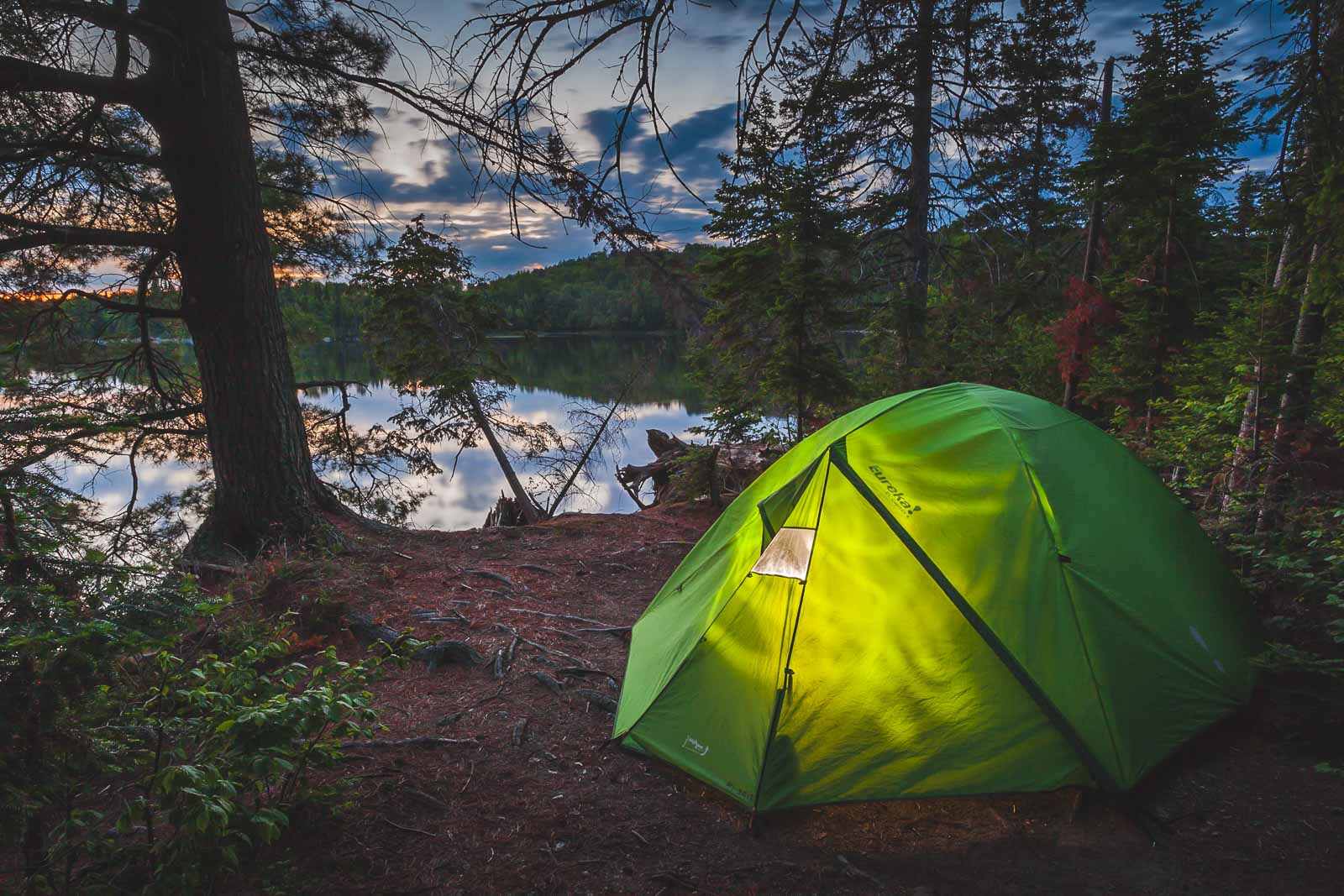
Regardless of whether you are camping in a National Park or designated campground, choosing a good campsite can make the difference between a great camping experience and a mediocre one. It is always a good idea to look for a site that has these features:
- A great view or close to the water. These are usually away from other campsites and offer a bit more privacy.
- Located further away from the bathrooms. If your campground is equipped with washrooms you will want to pick a site that is a good distance away, especially if you go to bed early or are a light sleeper.
- When camping in the summer, look for a site that has some shade by trees, you’ll thank us when the morning sun hits and makes your tent an oven.
4. Packing the right Camping Gear
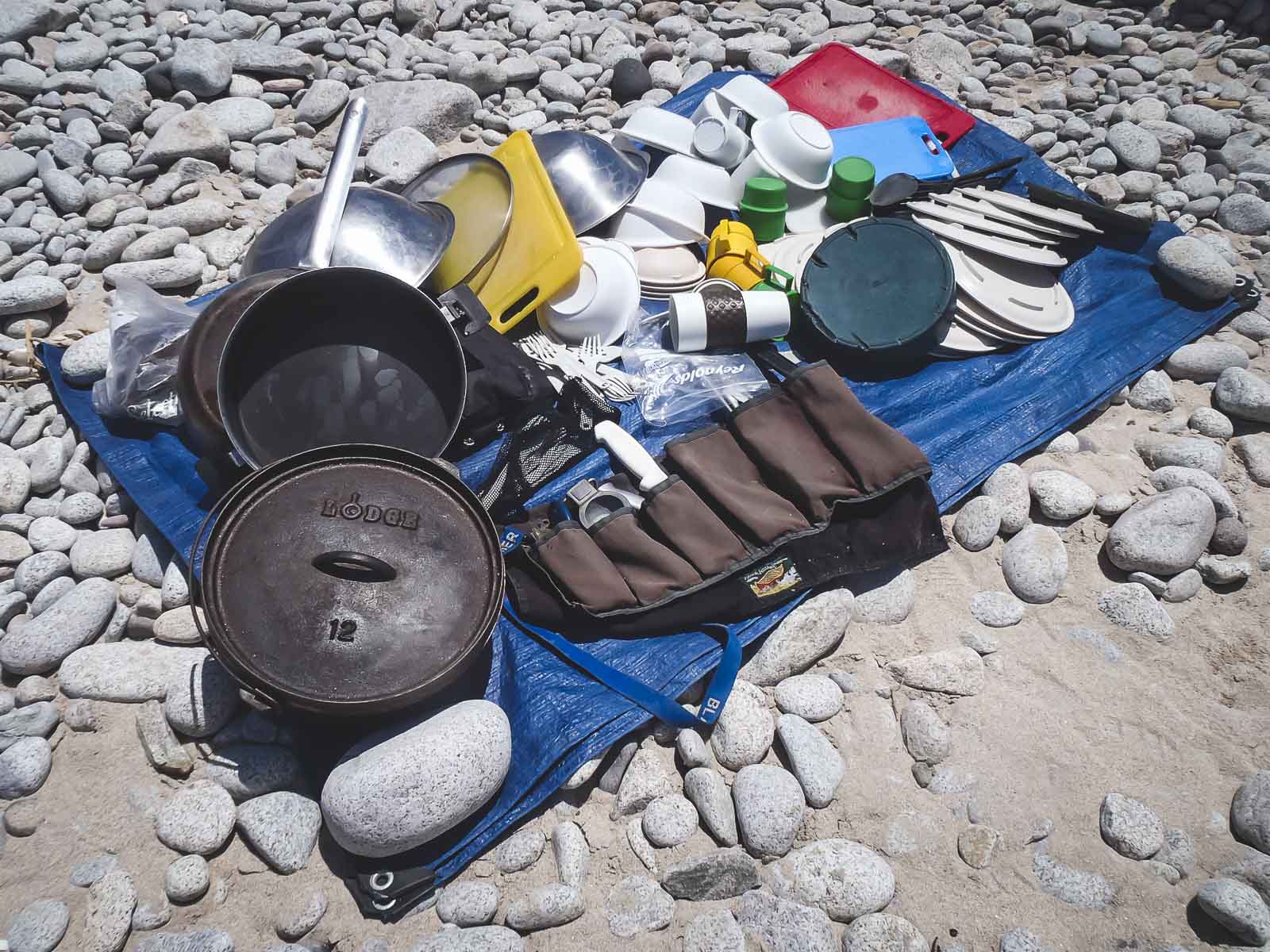
Camping gear is always a very personal choice and one that changes depending on comfort level and budget. Here are some suggestions for the camping essentials including your tent, sleeping bag, sleeping pad, and more.
Tent
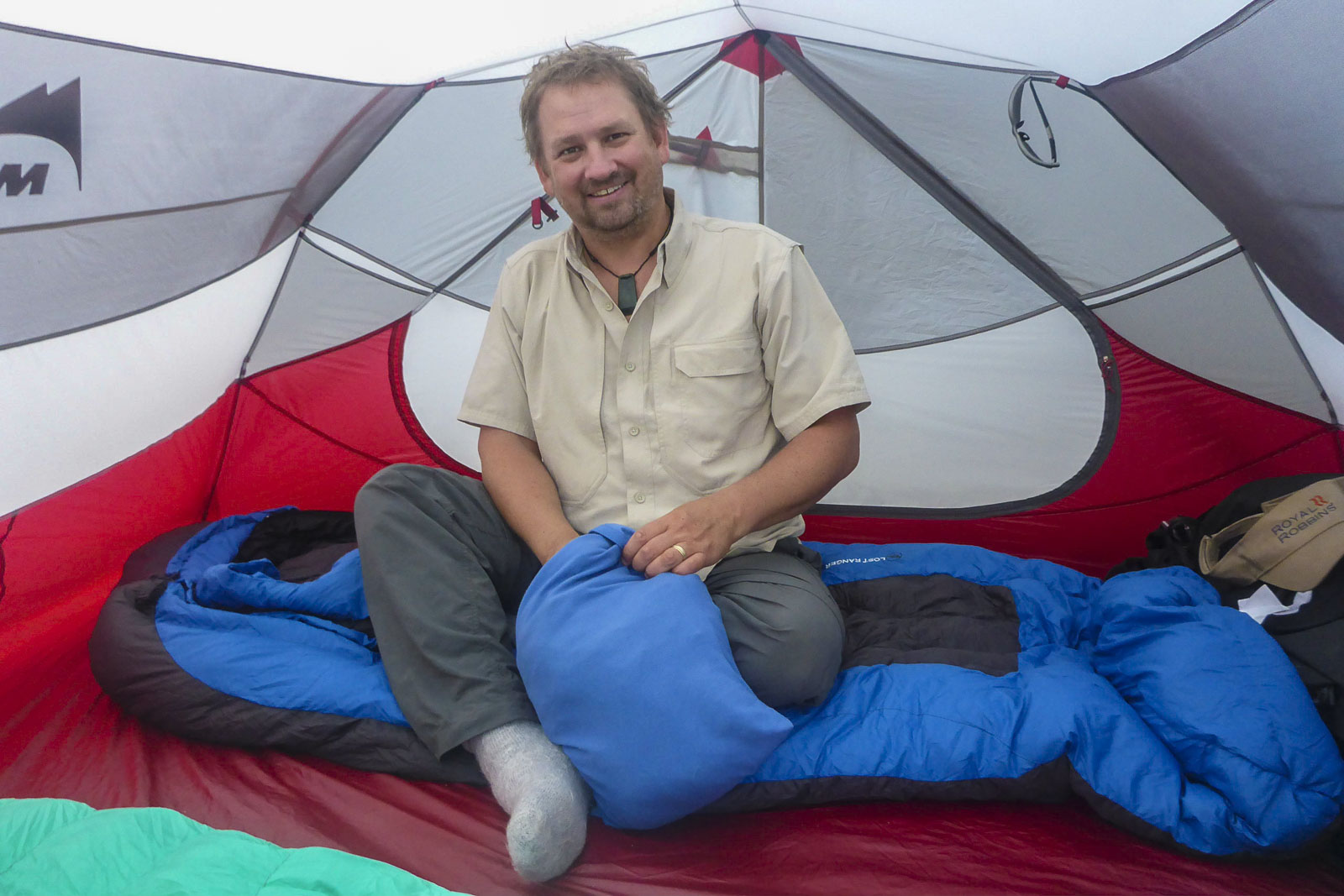
Your tent is the most important piece of camping gear you will need and it is worth spending money here if you want something that is going to last. We recommend a 3 season tent, as most of you will not be doing winter camping.
We own a three-person tent for the two of us. We find it is good to go up one size from what you need unless you are doing serious backcountry hiking and need to keep your weight down.
- If you are car camping, you can choose any size you want! A larger tent that you can stand up in and move freely in is ideal.
- If you are hiking and carrying all your gear, you’ll want to go as light and small as possible.
If you already have a tent, make sure to check the rain fly for leaks and waterproof the seams. You can buy sealant for zippers and you should have a tent repair kit and patches for any leaks or tears.
Sleeping Bag
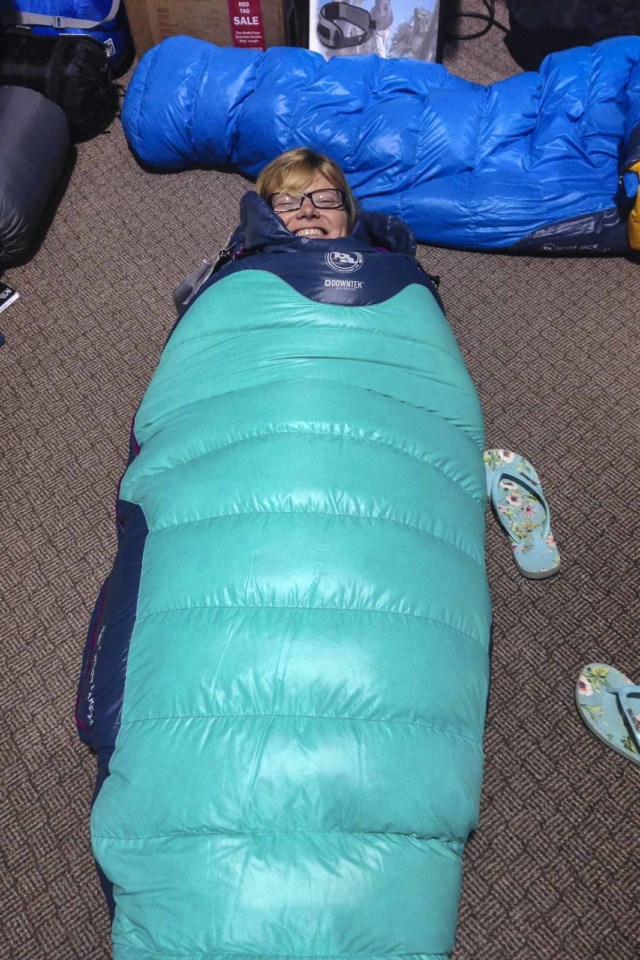
Next on the list of importance is your sleeping bag. This is another place you don’t want to skimp on when it comes to quality, especially if you want to stay warm.. There are 2 types of insulation that are used in sleeping bags; down and synthetic. Basically, down-filled sleeping bags have a better weight to insulation ratio than synthetic ones. This means, if weight is a real concern for you then down is the way to go. If you are just doing some weekend camping synthetic will definitely save you some money.
Sleeping Bag Suggestions
Sleeping Pad
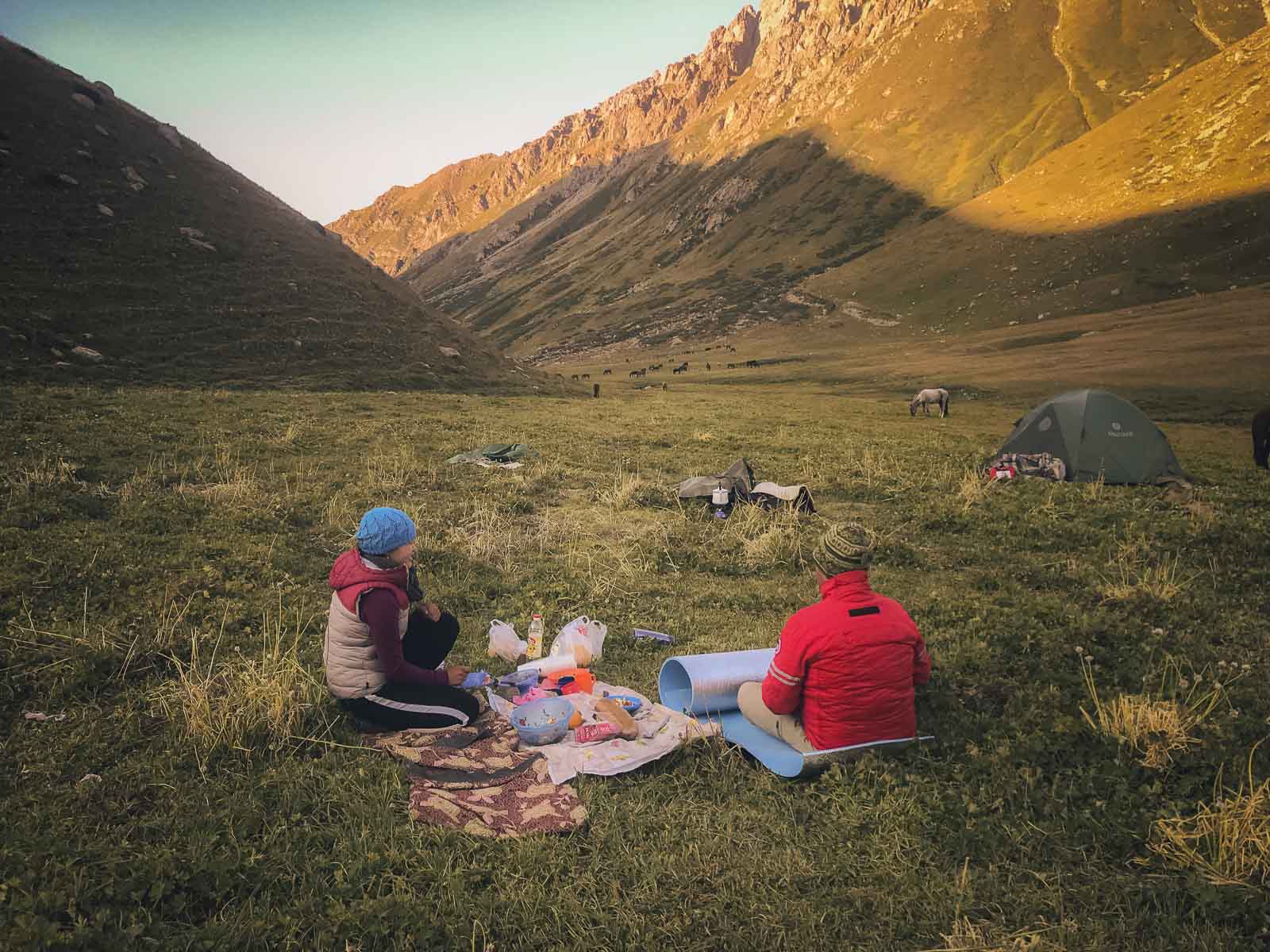
A good sleeping pad can mean the difference between a good night’s sleep and a bad one. A sleeping pad goes between you and the ground and is there to provide cushion and insulation. These are measured in R-Values which tell you the effectiveness of comfort and warmth. We recommend something between 2.5 and 3.5 depending on how much weight you want to carry and how much room you have in your pack.
We use an inflatable sleeping pad from Thermarest. It keeps us warm and comfortable no matter what the temperature outside.
There is a lot more gear you should consider for your next camping trip and in order to make sure you don’t miss anything check out The Ultimate Camping Checklist before you hit the road. We cover everything from what to pack in your first aid kit, what clothes to pack, cooking essentials, and much more.
Outdoor Living and Cover
You’ll also need to be prepared for rain and weather. Temperatures can dip in the middle of the night, so you’ll need to layer up, and have waterproof gear. We always pack a large tarp when car camping to protect from rain should there be a downpour. Fasten it to the trees around you and you can sit under it and enjoy the sound of pitter-patter raindrops. You don’t want to be stuck in a tiny tent all night if the rain comes.
Headlamp and Lanterns
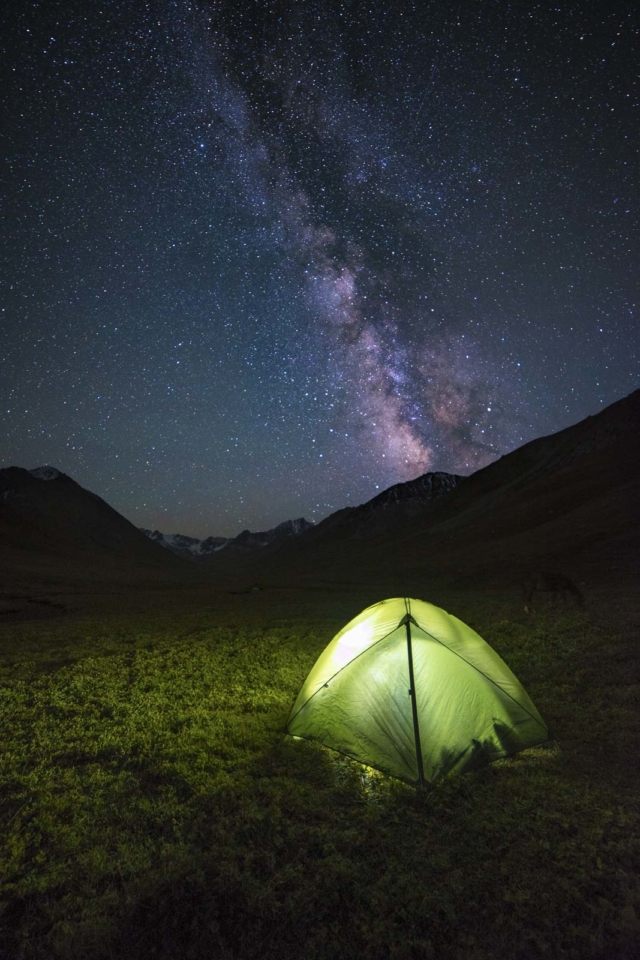
When sleeping under the stars, it’s a lot darker than in the city and you are going to want more than just the light on your smartphone. A camping lantern is a great thing to bring along whenever you go camping. Sure you’ll have the light of the campfire, but what if you want to play a game of cards or read a book, you’ll definitely want some light.
A headlamp is a must when camping. It is a great way to free up your hands so you can clean up, pack up, or pile some more wood onto the fire.
Practice Camp Set Up at Home
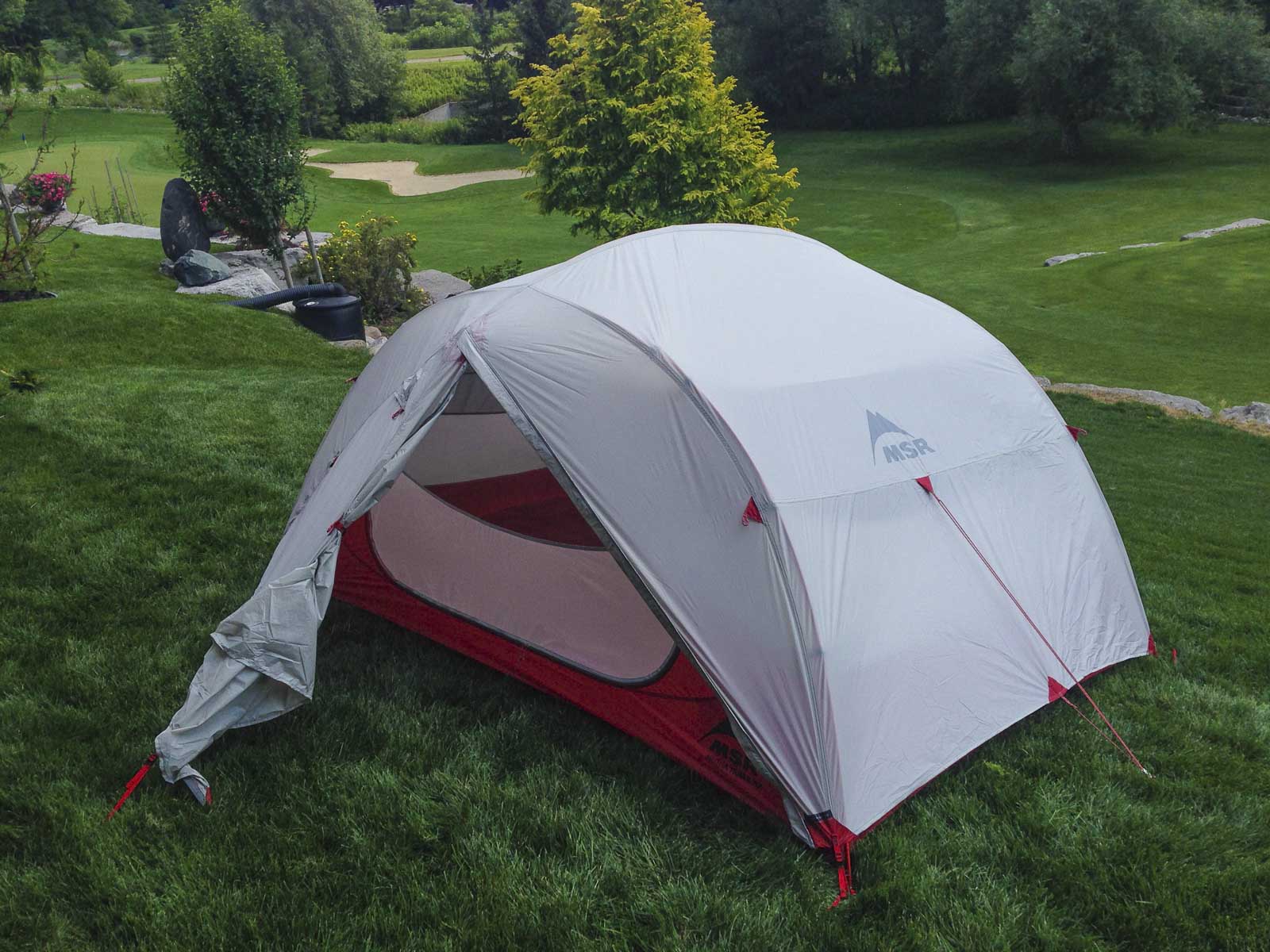
There is no worse feeling than getting to a campsite and trying to figure out how all your things work. You want to take the stress out of camping and a good way to do that is by practicing how you are going to set up camp at home. It may sound strange, but if this is your first time camping or you haven’t done it in a while, this will remind you of all those little things you may have forgotten about.
5. Practice Setting Up Your Tent
Too many people get to the campsite and set up their tents for the first time. It can be a frustrating experience and it can really set a negative tone for the weekend. So do yourself a favor and set up your tent a few times before your trip.
After you’ve set it up, get inside and see how it fits. What can you do to make things more comfortable, where are you going to put your packs and gear when inside? Where will you keep your flashlight so it is handy for those middle-of-the-night bathroom runs? Speaking of bathroom runs, don’t forget about toilet paper. What are you going to pack away and what are you going to keep at your fingertips in the middle of the night. The more you are in your tent, the more ideas will come to mind.
6. Practice using your Camp Stove
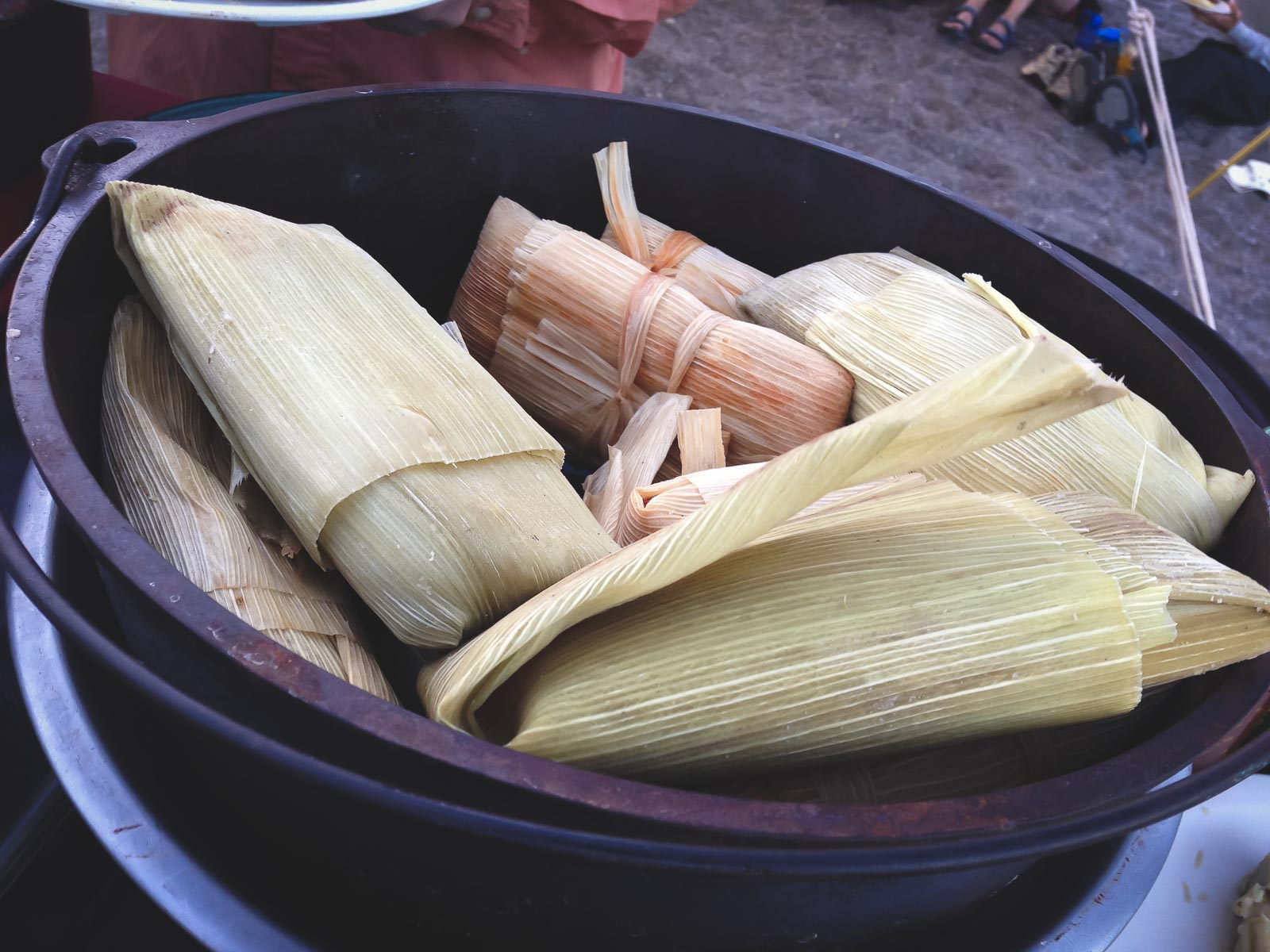
Another item you are going to want to make sure you know how to use ahead of time is your camp stove. It is not a lot of fun when you want to boil water or eat and you have no idea how to regulate or light your camp stove. This is the camp stove we use.
Follow the instructions that come with it and practice cooking some food and boiling water so that you are not trying to figure that out when you have just come off the trail and are hungry. This is a good car camping or comfort camping stove. See our full camping checklist for cooking and camping utensils.
7. Check Your Headlamp and lantern Batteries
There is nothing worse than getting to the campsite and realizing the batteries in your headlamp or lantern are dead. We always make sure to check these before we go on a camping trip. We also just headlamps that are re-chargeable, so if they do run out we can plug them into a power brick and recharge them on the go.
Make sure to test them at night, so you can see just how run down the batteries are. This is a good headlamp for camping.
8. Setting Up Your Camp Site
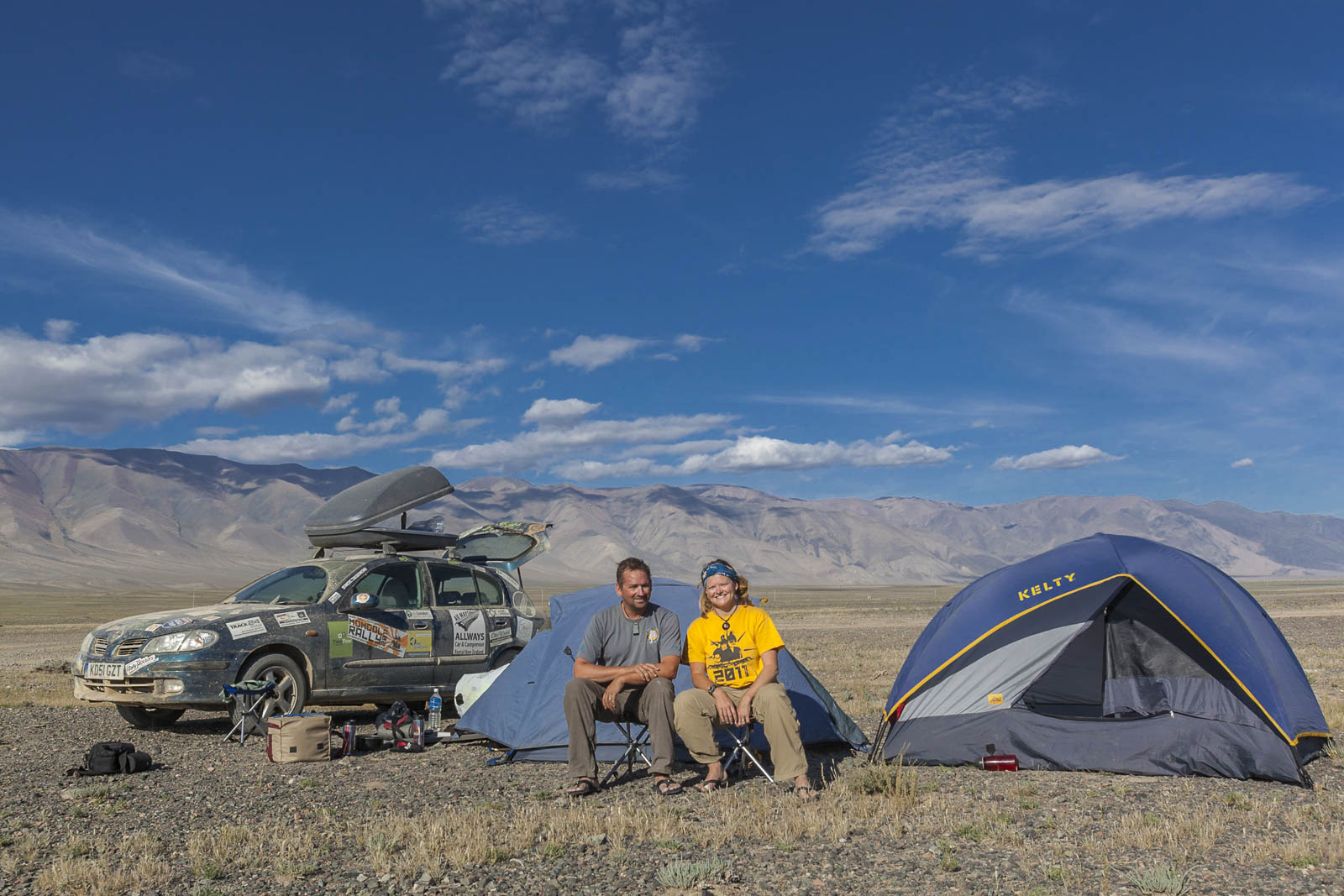
At the campsite, be sure to select level ground and look for any rocks, sticks, or roots that will ruin your sleep. Choose a site that has a good tree cover that you can use to tie your tarps and hang any gear. We use a pegless clothesline to dry bathing suits and towels.
We always use our fly on our tent and use it as a vestibule to store our packs. We don’t normally keep our packs in the tent. Instead, we keep them just outside the zipper doors under the vestibule. That said, be sure to have a tarp or footprint under the tent as well. It can get a bit warmer, but we just keep the doors of the fly open to allow air through.
9. Prepare and Plan Your Meals
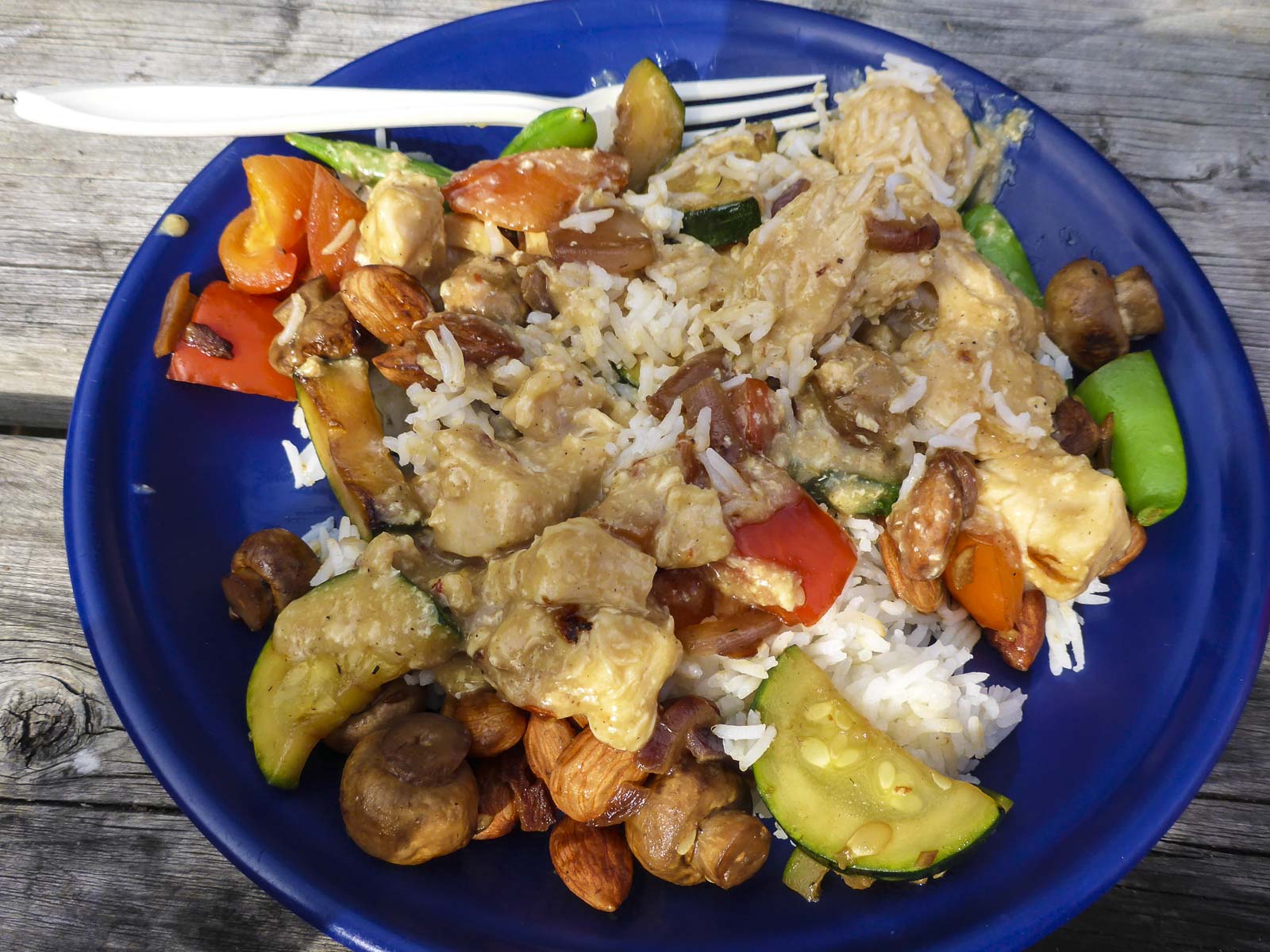
When we first started camping, we didn’t think about meals. We stopped a the store on the way and grabbed some hot dogs and marshmallows thinking we’d just cook over the campfire. This was a bad idea. As we learned to prepare food ahead of time, we found that we could eat very well while camping. There are many prepared meals that you can buy for camping these days from pre-made chicken gumbo to vegetable lasagna.
You can easily pick up gourmet meals at REI (in the US) or MEC stores (in Canada.) Or you can prepare your own meals and portion them out in ziplock bags or plastic bins. We love making stews or chilis when camping. It’s easy to heat up and clean up afterward.
Don’t forget about breakfast. Oatmeal is a great option and we always have a French Press to make delicious coffee. Just add water!
Eggs when camping – Want eggs instead of oatmeal or cereal in the morning? Pre crack your eggs ahead of time and put them in a water bottle. That way you don’t have to deal with messy shells at the campsite. Personally, we don’t cook over the campfire and prefer to use that for S’mores and hot dogs. We use a multi-fuel camp stove and instead make a fire for roasting marshmallows.
10. Make a Kitchen and Sitting area
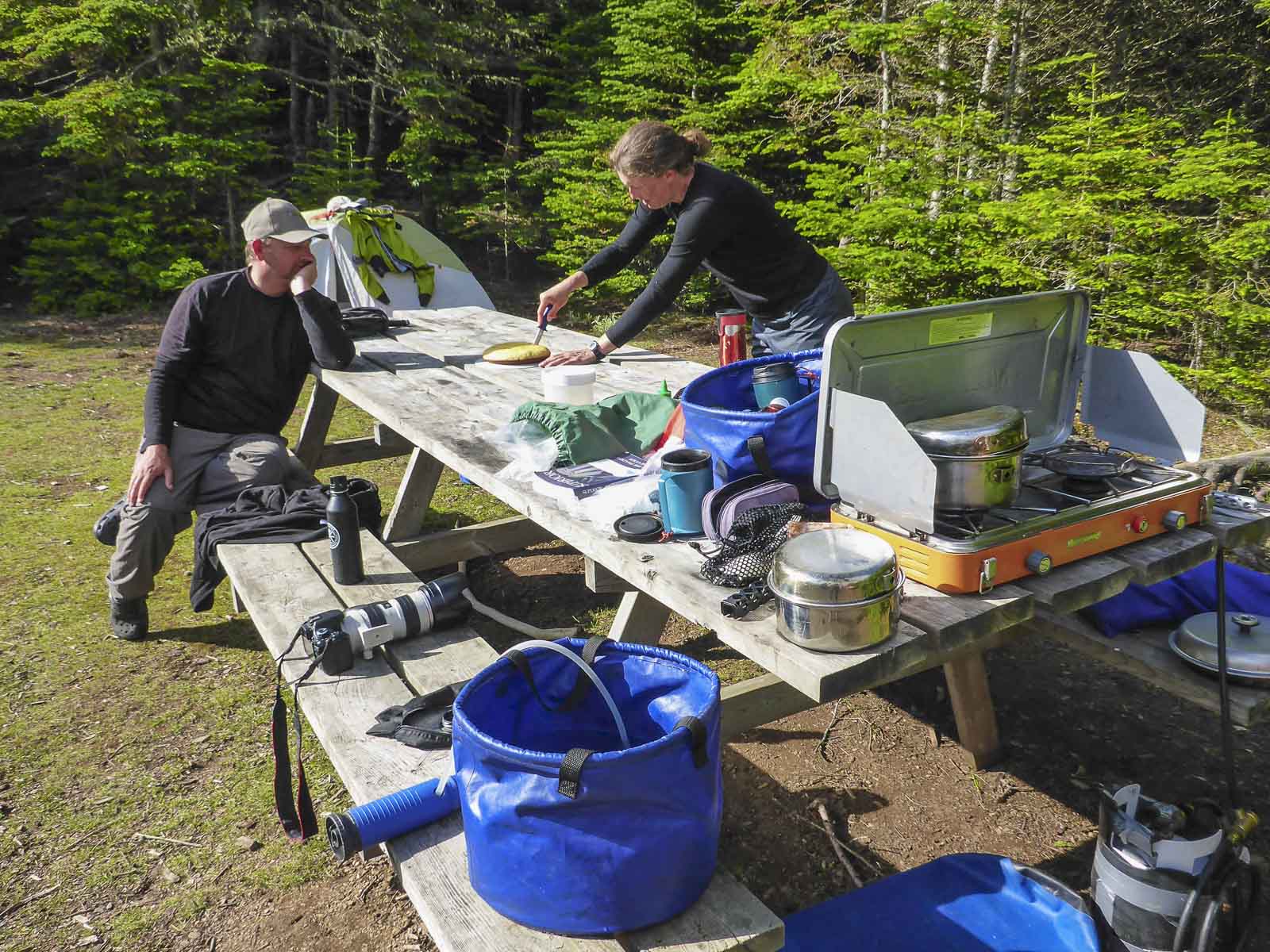
You are not going to want to sit in your tent all night, so you need to make sure you have all the comforts to spend a few hours outside. We made the mistake while camping our way through Spain of not bringing camp chairs and we were always sitting on the ground. Pack foldable camp chairs. Don’t solely rely on the picnic tables provided at most campsites. Besides, when you are ready to sit around the campfire, you can’t take the table over.
Pro Tip: Be sure to string a tarp as soon as you get to camp as well. It will protect from rain and offer some shade from the sun. We usually string our tarp up over our eating area.
11. Dealing with Bugs
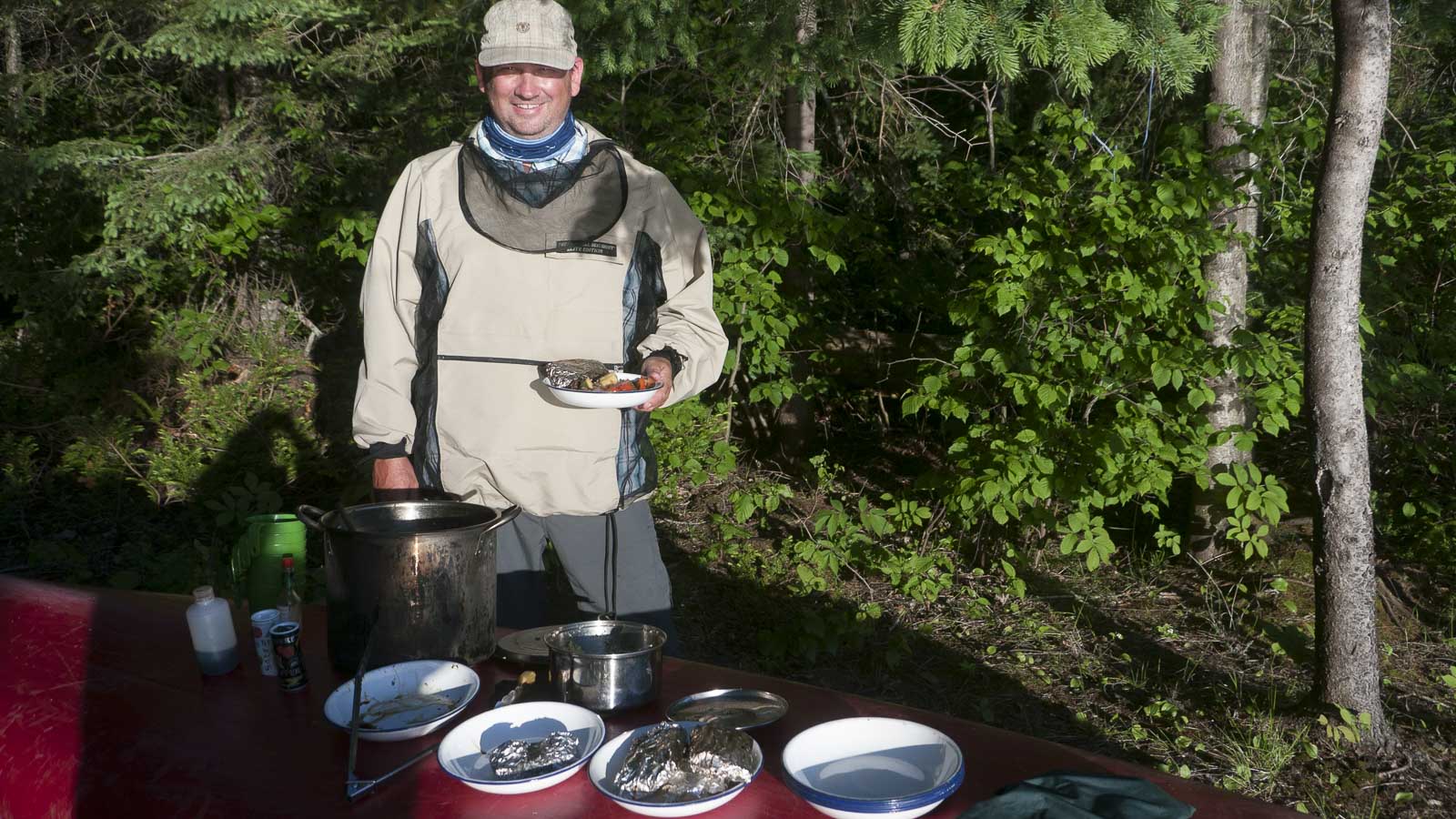
Many people pack a screened gazebo for sitting in. If you are car camping, go for it. You can set it up around the picnic table and have a place to eat and relax free from bugs. If you are camping in places with mosquitoes and black flies, we highly recommend bug jackets. It is also a good idea to make sure you have bug spray and after bite in your first aid kit to help mitigate the bugs but also alleviate the itching and swelling when you do get bit.
Pro Tip: never leave your tent zipper open. Close it immediately when exiting or entering, it can fill up quickly with bugs.
12. Campfire Tips
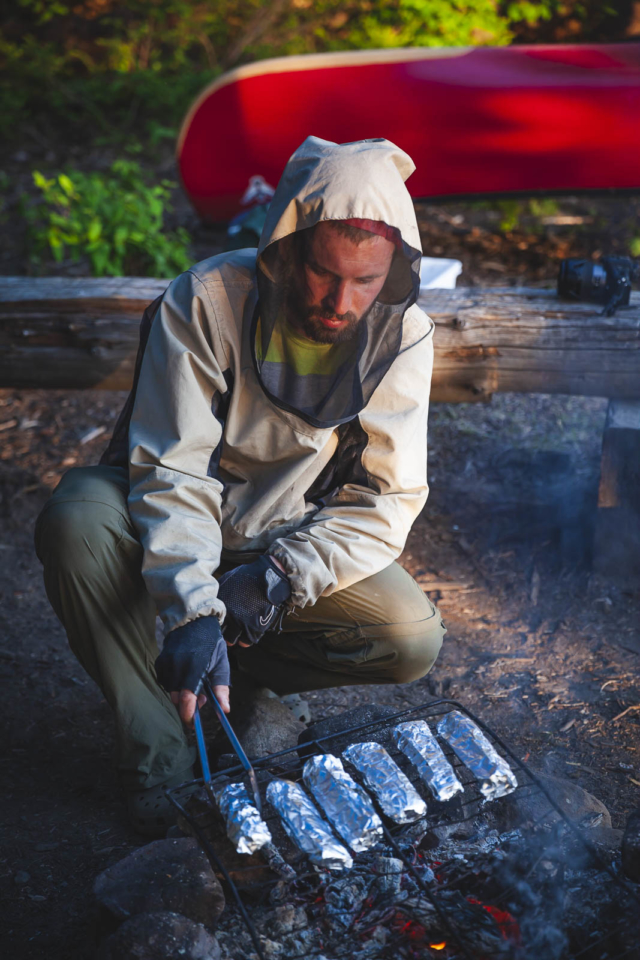
Our favorite part of camping is making a campfire. But a lot of people don’t know how to make one in this day and age. Before you go camping, learn to make a good campfire.
- Lighters – Be sure to pack several ways to start a fire. Matches can get wet and lighters can be finicky, so bring a few backup options of both.
- Firewood – Make sure you buy dry wood. We’ve had fires smolder and fizzle because the wood was damp or waterlogged. When purchasing firewood, make sure it’s nice and dry.
- Tinder/Firestarter – You’ll want something that ignites quickly like dry leaves or pine needles. Newspaper is great for this as well. But you can simply buy a firestarter when you get your wood.
- Kindling – When purchasing firewood, make sure you get small strips of wood known as kindling. This will help ignite your larger logs.
- Placing the logs – When building a fire, it’s important to place your firestarter, kindling and logs in the proper configuration to ignite properly. You can build a teepee starting with the tinder in the middle, then create a teepee shape with your kindling. Once its lit and going strong, slowly add the logs to the fire. This is one of the easiest methods for making a fire.
We also recommend having some kind of poker on hand to move the logs. If you plan on using it for cooking then a stand-up cooking rack is a great idea. We pack leather work gloves for the campsite. When you are ready for bed or leaving the campsite, be sure to put the campfire out completely with water. Pro Tip: Cotton balls rolled in vaseline make for great fire starters.
13. Water
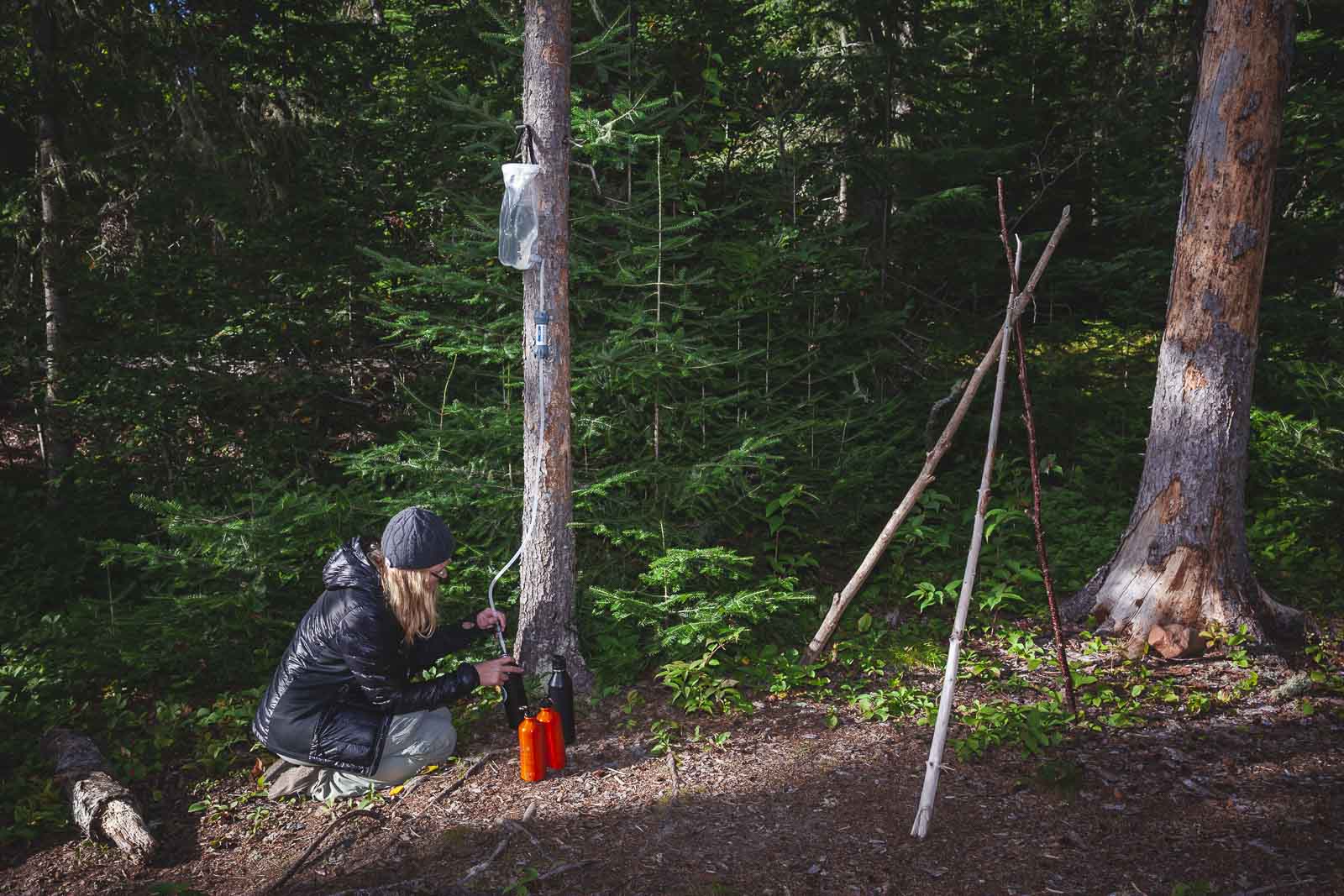
Many campgrounds have hoses and sinks where you can wash up and get water, but we recommend bringing a large several gallon jug of water for cooking and drinking. You can get a collapsible jug for cooking and a lined insulated container to keep water cool. Make sure you have a cooler filled with ice if you are car camping.
If you are backcountry camping you will want to have a water purification system like a Steripen. That way you can get water out of streams, rivers, and lakes for safe drinking. And pack a Nalgene to refill your water instead of cups. For coffee we love insulated travel mugs.
14. Dry Your Tent
When you are finished with your tent, don’t forget to take care of it. Make sure it it dry before packing it up. If you don’t have time to dry it out, be sure to unpack it when you are home to hang it out. Sweep out the tent and make sure there is nothing left inside. Little twigs or rocks can cause holes. The more you care for your tent, the longer it will last.
Fast Hacks for Camping
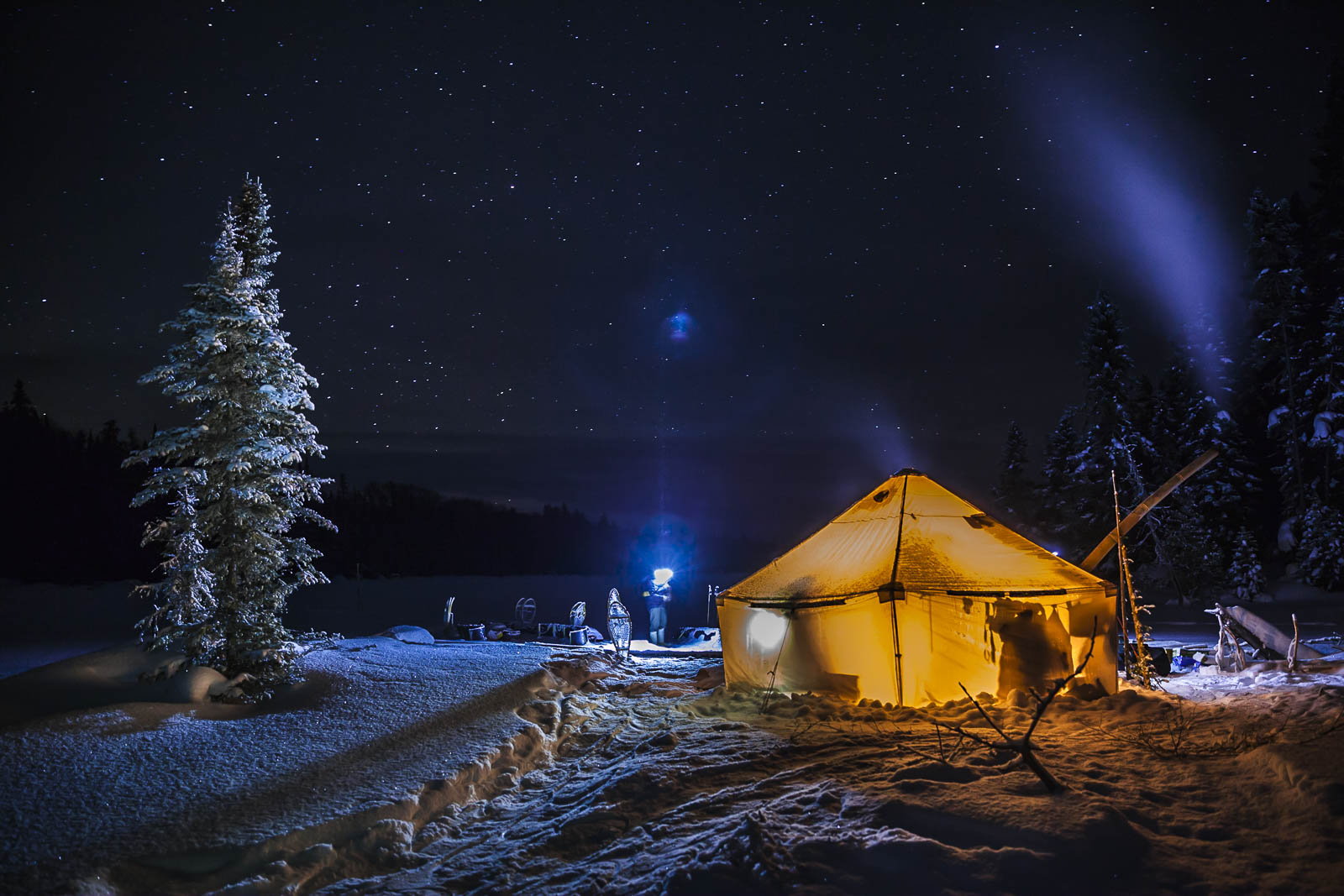
15. Tripping over your tent pegs
Gather some rocks and put them over your tent pegs so you don’t stub your toe in the middle of the night.
16. Mosquito Repellant
Mix lemon and eucalyptus to create a natural mosquito repellent. Pack some sprigs of sage and burn it to deter mosquitoes from coming around the fire.
17. Use jugs of water for ice
Ice can get messy and take up a lot of space when camping. Instead, fill up your water jugs and freeze them before camping. Then use them as ice packs. They’ll keep your food cold, and slowly melt so you can drink ice water
18. Fill a hot water bottle to keep you warm at night
Or fill your Nalgene before bed with boiling water and put it in your tent to help keep you warm.
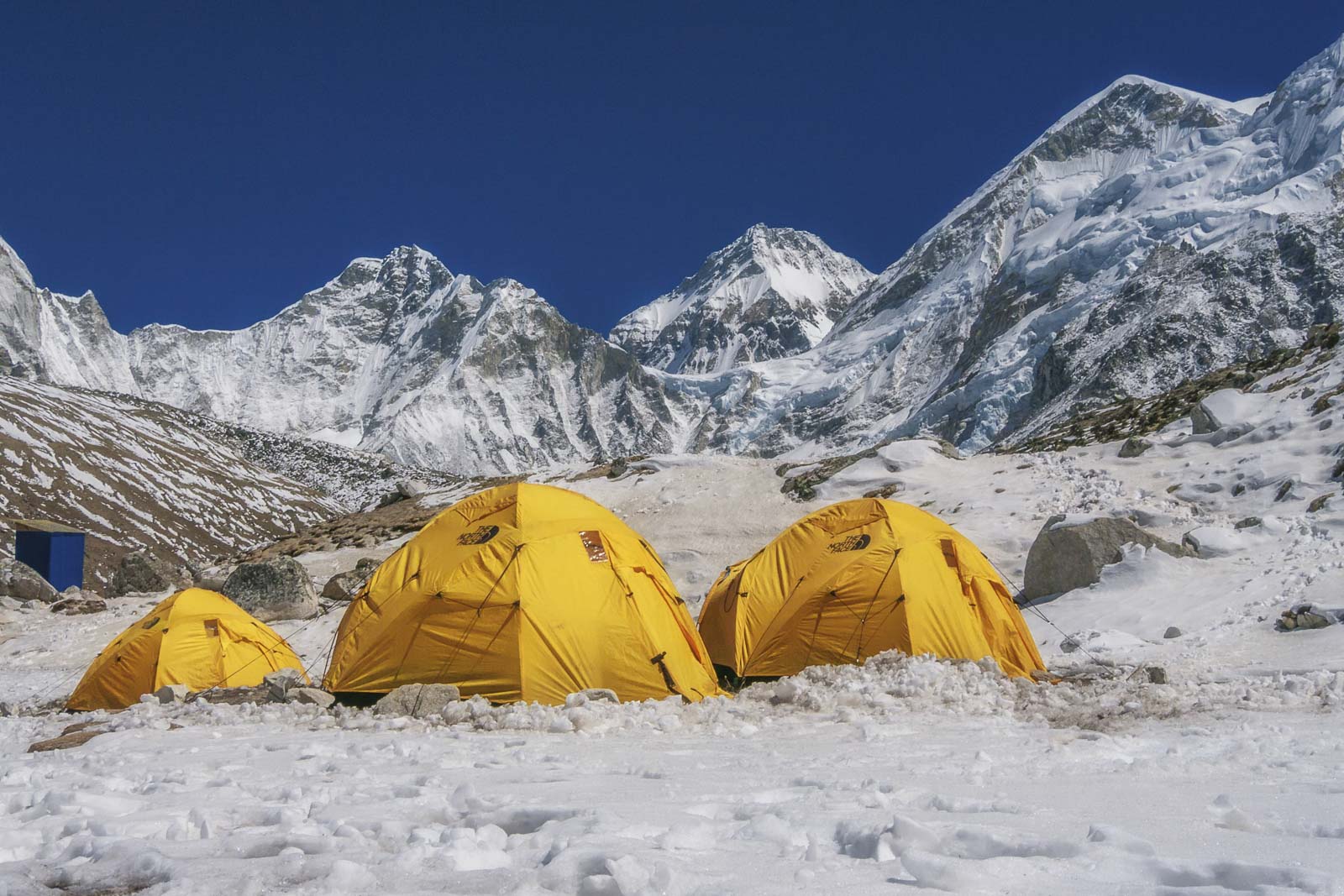
19. Pack a pair of crocs for wearing around camp
They are easy to slide on and off when getting out of the tent and they are sturdy enough that you won’t stub your toe.
20. Pack a warm hat and warm socks for sleeping
I even love wearing a buff around my neck to keep warm. Temperatures can get chilly when camping. Read: The Ultimate Guide to Everest Base Camp
21. Pack wipes and hand sanitizer
Camping can get messy and you don’t always have a sink and soap readily available. Hand wipes and sanitizer are always good to have on hand.
22. Sleep with your clothes in your sleeping bag
When camping through Africa, it was hot during the day, but freezing at night. I kept the clothes I was going to wear the next day in my sleeping bag, so I didn’t dread putting them on in the morning.
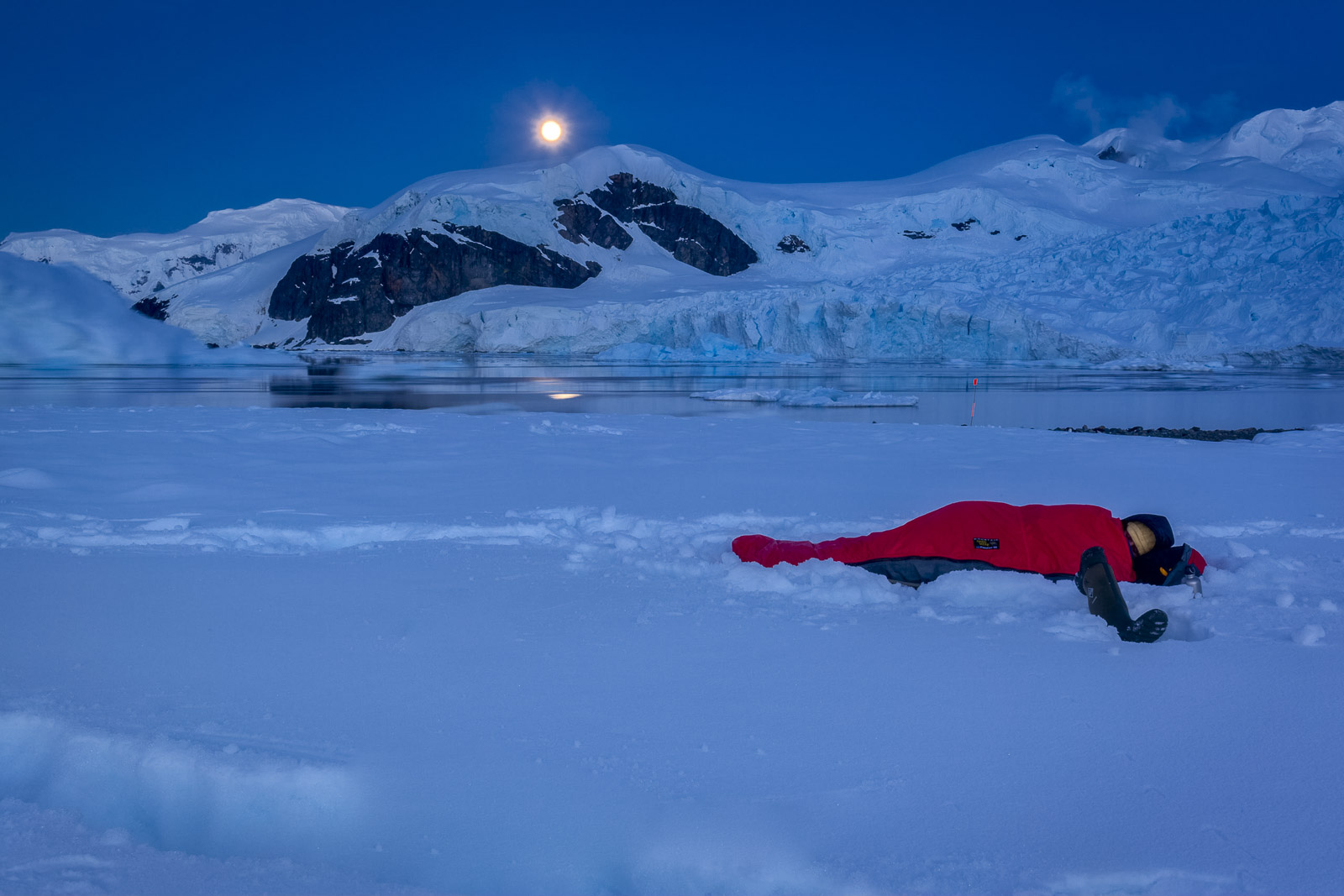
23. Don’t have a lantern? No problem
Instead, loop your headlamp around your Nalgene filled with water and shine the light towards it. You have an instant lantern!
24. Pack in bins and sacks
Staying organized when camping is key to having the most fun. Pack your food and kitchen items in bins that can be used as tables for eating and cutting. One can be used for all your food and the other for all your utensils, plates and pots.
25. Don’t forget condiments and spices
You don’t have to bring the entire kitchen, but your favorite spices and condiments can turn food from bland to wham!
Pill containers are a great way to store spices in a small space. I have seen other people recommend tic tac packets. This is a great idea, or you can just buy a Six Spice Camping shaker.
And these are all the tent camping hacks I can think of at the moment. Do you have a secret or unique camping tip to add? We’d love to hear from you. We’re always learning and adding to our camping gear list.
Plan your next camping trip with these Resources
- Glamping in Big Sur – Luxury in the Redwood Forest
- Dinosaur Provincial Park – Glamping Tour in the Alberta Badlands
- 21 of The Best Treks in the World
- Camping in Spain: Everything You Need to Know
- 25 Camping Tips – Our Top Hacks for Happy Nights Outdoors
- The Ultimate Travel Packing List (By Professional Travellers)
- The Best Travel Gear – Unique Ideas for Smart Packing

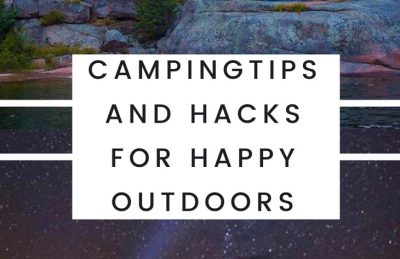
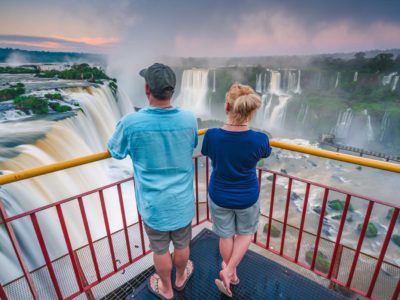
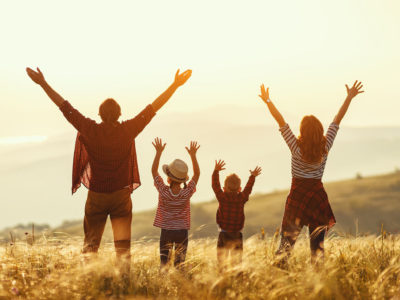
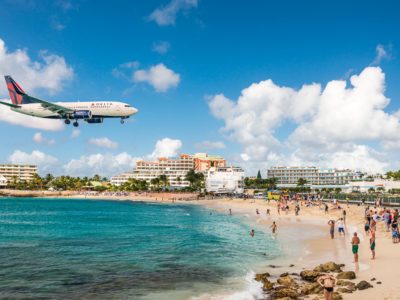
I loved reading about your camping tips. Looking forward to more stories from your outdoor escapades! I loved also bringing my camping tools.
I loved reading about your camping tips. Looking forward to more stories from your outdoor escapades! I loved also bringing my power station for camping.
I wanted to take a moment to express my appreciation for the fantastic tips and insights you provided in this article. My favorite is 25. Don’t forget condiments and spices which i usually forget.
Simple but helpful tips. Amazing. The challenging part is packing food. I started exploring campsites in rizal and collectings ideas and tips. Thank you for sharing.
Such a great post. Thank you so much for an amazing post.
Is there a campground you would recommend, I want to explore different places this summer, friends.
planning meals is the toughest as we need more snacks and comfort food as we don’t have much space and cutlery in the tent and carrying hot water is brilliant idea
Cool camping tricks that really are a must-try and truly could be a life-saver! The photos look astoundingly surreal and out of this world! It’s like the sceneries were only captured to be viewed on a movie screen! The beautiful art of nature plus great photography equals these masterpieces! Thank you for sharing these camping tips and tricks with us!